Solar eclipse of April 19, 1939
| Solar eclipse of April 19, 1939 | |
|---|---|
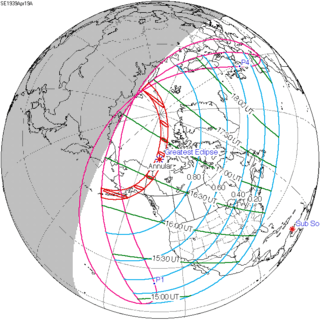 Map | |
| Type of eclipse | |
| Nature | Annular |
| Gamma | 0.9388 |
| Magnitude | 0.9731 |
| Maximum eclipse | |
| Duration | 109 sec (1 m 49 s) |
| Coordinates | 73°06′N 129°06′W / 73.1°N 129.1°W |
| Max. width of band | 285 km (177 mi) |
| Times (UTC) | |
| Greatest eclipse | 16:45:53 |
| References | |
| Saros | 118 (64 of 72) |
| Catalog # (SE5000) | 9373 |
An annular solar eclipse occurred on April 19, 1939. A solar eclipse occurs when the Moon passes between Earth and the Sun, thereby totally or partly obscuring the image of the Sun for a viewer on Earth. An annular solar eclipse occurs when the Moon's apparent diameter is smaller than the Sun's, blocking most of the Sun's light and causing the Sun to look like an annulus (ring). An annular eclipse appears as a partial eclipse over a region of the Earth thousands of kilometres wide.
This annular eclipse is notable in that the path of annularity passed over the North Pole. Land covered in the path include part of Alaska, Canada, and Franz Josef Land, Ushakov Island and Vize Island in the Soviet Union (today's Russia).
Related eclipses
Solar eclipses 1939-1942
This eclipse is a member of a semester series. An eclipse in a semester series of solar eclipses repeats approximately every 177 days and 4 hours (a semester) at alternating nodes of the Moon's orbit.[1]
| Solar eclipse series sets from 1939-1942 | ||||||
|---|---|---|---|---|---|---|
| Descending node | Ascending node | |||||
| Saros | Map | Saros | Map | |||
| 118 | April 19, 1939 Annular |
123 | October 12, 1939 Total | |||
| 128 | April 7, 1940 Annular |
133 | October 1, 1940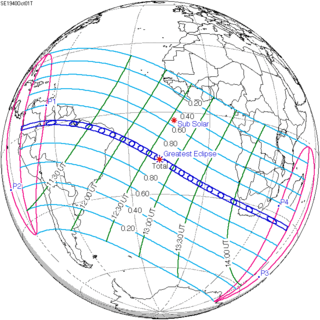 Total | |||
| 138 | March 27, 1941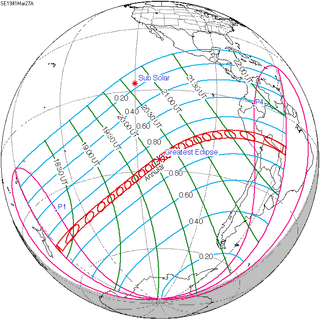 Annular |
143 | September 21, 1941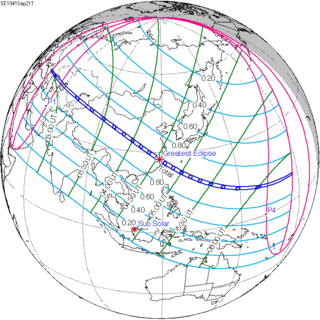 Total | |||
| 148 | March 16, 1942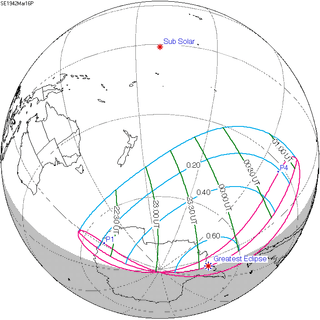 Partial |
153 | September 10, 1942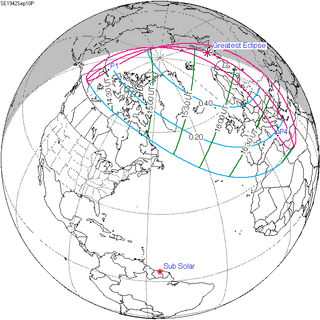 Partial | |||
| The partial solar eclipse on August 12, 1942 occurs in the next lunar year eclipse set. | ||||||
Notes
- ↑ van Gent, R.H. "Solar- and Lunar-Eclipse Predictions from Antiquity to the Present". A Catalogue of Eclipse Cycles. Utrecht University. Retrieved 6 October 2018.
References
- Earth visibility chart and eclipse statistics Eclipse Predictions by Fred Espenak, NASA/GSFC
| Wikimedia Commons has media related to Solar eclipse of 1939 April 19. |
